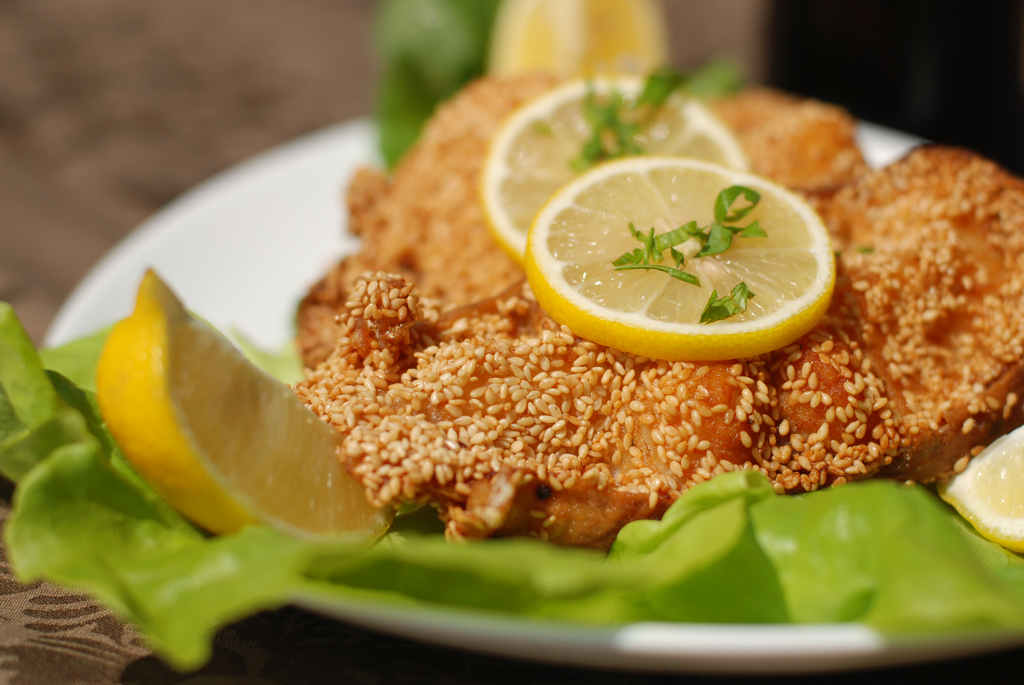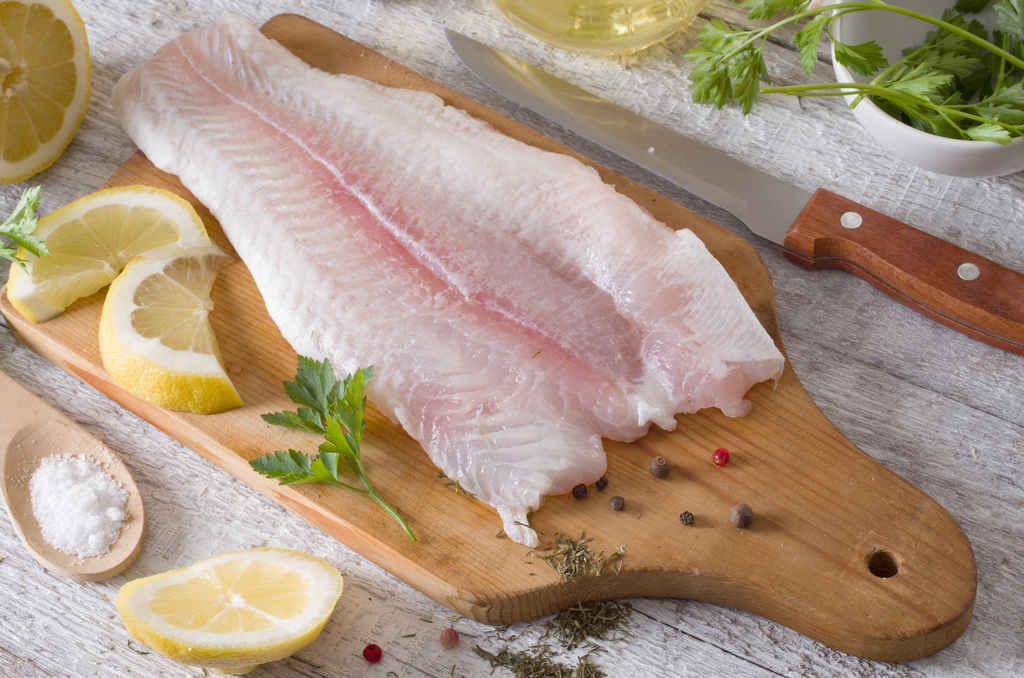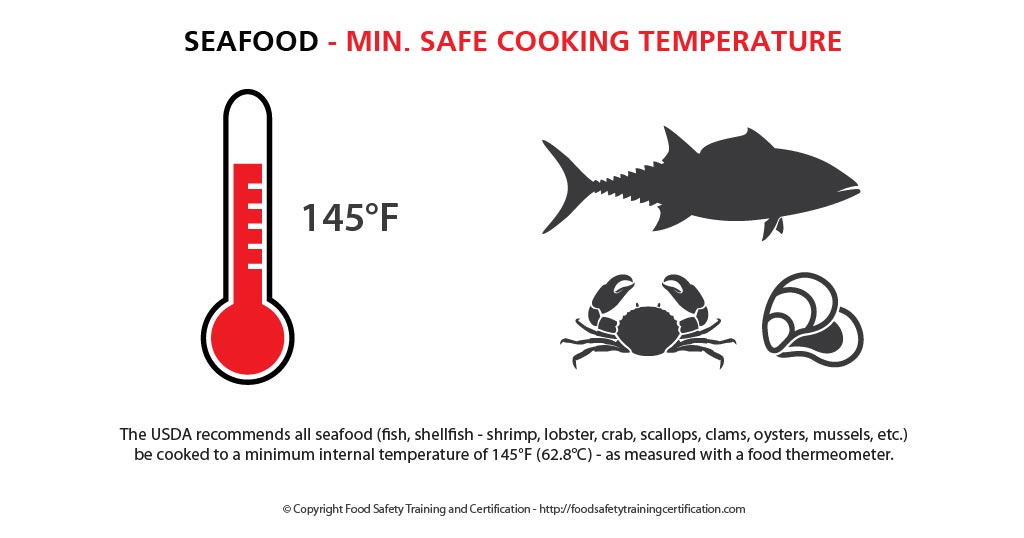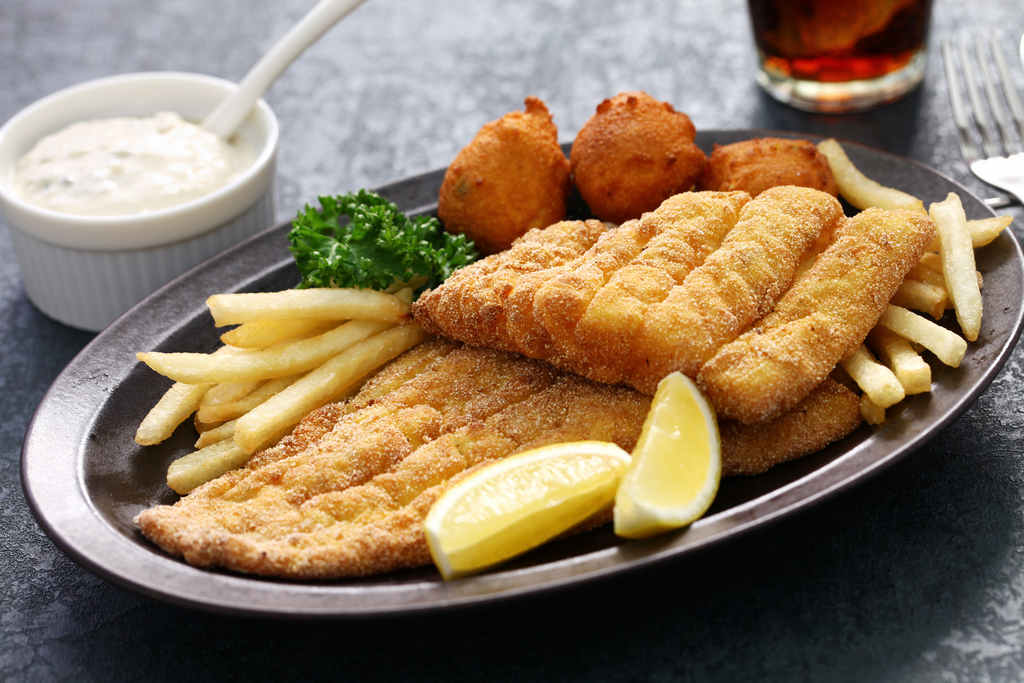Thinking of catfish for dinner? Catfish, as with any seafood, requires certain safe handling to reducing the risk of foodborne illness.
Likewise, all seafood should be cooked to an internal temperature of 145ºF – or appear opaque and separate easily with a fork when done.
 Image Source: Shutterstock
Image Source: Shutterstock National Catfish Month & The Catfish Institute (TCI)
Since 1984, August was designated National Catfish Month to celebrate and appreciate the delicious, easy to cook, high in protein, versatile fish.
The Catfish Institute (TCI), the Jackson-based marketing arm of the U.S. Farm-Raised Catfish industry, works throughout the year to promote the awareness and consumption of America’s largest aquaculture product.
U.S. farm-raised catfish is consistently high quality and, unlike ocean-caught fish, is available all-year long at a price unaffected by external environmental conditions.
Ninety-four percent of all U.S. Farm-Raised Catfish is raised in Alabama, Arkansas, Louisiana and Mississippi. The U.S. Farm-Raised Catfish industry in these four states employs employs nearly than 10,000 people and contributes more than $4 billion to each state’s economy.
- Learn about foodborne pathogens, cross contamination, cold and hot food safety, and best practices to prevent foodborne illness.
- Food Manager ANSI Certification: $99.00 - Valid in all States
- Food Handler Training: Only $7.00!
- 10% OFF: Enter Promo Code "train10off" at Checkout
Know Your Seafood – Make Informed Choices
By simply asking a few questions about whether a store or restaurant offers sustainable seafood, you can help shape demand for fish that has been caught or farmed in environmentally responsible ways:
- Where is it from? (Domestic or imported – try to choose domestic).
- Is it farmed or wild?
- How is it farmed? (If you are buying farmed fish, when available, buy seafood raised in the U.S. in recirculating systems)
The Monterrey Bay Aquarium’s Seafood Watch’s catfish recommendations are:
U.S. farmed catfish or blue catfish caught in the Chesapeake Bay is a “Best Choice.” Say “No, thanks” to imported catfish (aka pangasius) except when it’s eco-certified source recommended by Seafood Watch.
Most of the catfish eaten in the U.S. is imported, and unless you specifically ask for “U.S. Farm-Raised Catfish,” or see the official seal, you might be getting Asian-farmed catfish.
Making Better Seafood Choices: Seafood Watch
Likewise, this video from Monterrey Bay Aquarium’s Seafood Watch program highlights why such questions are important and how you can help protect the ocean just by asking your local grocery store or restaurant if they serve sustainable seafood.
Selecting Safe Seafood
Fresh Fish
Only buy fish that is refrigerated or displayed on a thick bed of fresh ice that is not melting (preferably in a case or under some type of cover).
Choose fresh catfish that is firm and white. If it’s been sitting around in a display case for days, or frozen, it will likely have a fishy smell and taste. If it smells overwhelmingly fishy, it won’t taste any better. If possible, find a local fisherman and buy freshly caught catfish. Farm raised catfish may taste less fishy as well because they are fed a controlled diet. Avoid catfish caught in extremely muddy water.
Put catfish on ice or in the refrigerator or freezer soon after buying it. If seafood will be used within 2 days after purchase, store it in the refrigerator. Otherwise, wrap it tightly in plastic, foil, or moisture-proof paper and store it in the freezer.
 Image Source: Shutterstock
Image Source: Shutterstock Frozen Seafood
Frozen seafood can spoil if the fish thaws during transport and is left at warm temperatures for too long. Follow these tips when selecting frozen seafood:
- Don’t buy frozen seafood if its package is open, torn, or crushed on the edges.
- Avoid packages that are positioned above the “frost line” or top of the freezer case.
- Avoid packages with signs of frost or ice crystals.
Avoid Cross-Contamination: Separate for Safety
When preparing fresh or thawed seafood, it’s important to prevent bacteria from the raw seafood from spreading to ready-to-eat food. Take these steps to avoid cross-contamination:
- Wash your hands for at least 20 seconds with soap and warm water before and after handling any raw food.
- Wash cutting boards, dishes, utensils, and counter tops with soap and hot water between the preparation of raw foods, such as seafood, and the preparation of cooked or ready-to-eat foods.
 Image Source: Shutterstock
Image Source: Shutterstock Prepare Safely
Thawing. Thaw frozen seafood gradually by placing it in the refrigerator overnight. If you have to thaw seafood quickly, either seal it in a plastic bag and immerse it in cold water or — if the food will be cooked immediately thereafter — microwave it on the “defrost” setting and stop the defrost cycle while the fish is still icy but pliable.
Preparing. Remove the skin from the catfish using a sharp fillet knife. Fish skin increases the fishy taste and gives the catfish a dark appearance on one side after it is fried. Removing the skin decreases the fishy taste and makes the finished product more appealing.
Lay the catfish fillets in a shallow container and cover with milk or buttermilk. Cover the dish with plastic wrap and refrigerate for at least one hour. Milk can help reduce the fishy taste in catfish and other types of fish as well.
Cooking
Most seafood should be cooked to an internal temperature of 145ºF. If you don’t have a food thermometer, the flesh should be opaque and separate easily with a fork.
Frying. Dip both sides of the catfish fillets into a breader, such as yellow cornmeal, flour or seafood breader mix. Pre-season the breading mixture with any seasoning of your choice such as Cajun, blackened or seafood seasoning.
Place the fish fillets in hot oil, either in a deep fryer or frying pan. The fish fillets are done when they turn a golden brown color. On average, this is 2 to 4 minutes on each side, if frying in a pan, or 3 to 6 minutes in a deep fryer.

Serving
Never leave seafood or other perishable food out of the refrigerator for more than 2 hours or for more than 1 hour when temperatures are above 90ºF. Bacteria that can cause illness grow quickly at warm temperatures (between 40ºF and 140ºF).
 Image Source: Shutterstock
Image Source: Shutterstock
Additional Seafood Info
 The Fishmonger’s Apprentice: The Expert’s Guide to Selecting, Preparing, and Cooking a World of Seafood, Taught by the Masters
The Fishmonger’s Apprentice: The Expert’s Guide to Selecting, Preparing, and Cooking a World of Seafood, Taught by the Masters
In The Fishmonger’s Apprentice, you get insider access to real life fishermen, wholesale markets, fish buyers, chefs, and other sources—far away from the supermarket, and everywhere the fish go well before they make it to the table. This book is a handbook for enjoying fish and seafood—from fishing line to filleting knife and beyond—and gives you instructional content like no other book has before. Whether you’re a casual cook or devoted epicure, you’ll learn new ways to buy, prepare, serve, and savor all types of seafood.

 The Fishmonger’s Apprentice: The Expert’s Guide to Selecting, Preparing, and Cooking a World of Seafood, Taught by the Masters
The Fishmonger’s Apprentice: The Expert’s Guide to Selecting, Preparing, and Cooking a World of Seafood, Taught by the Masters